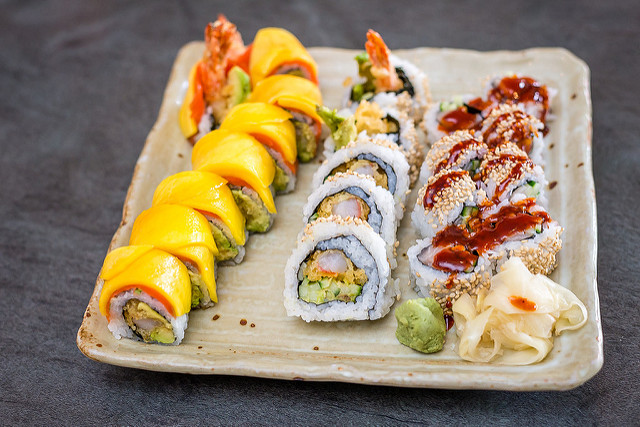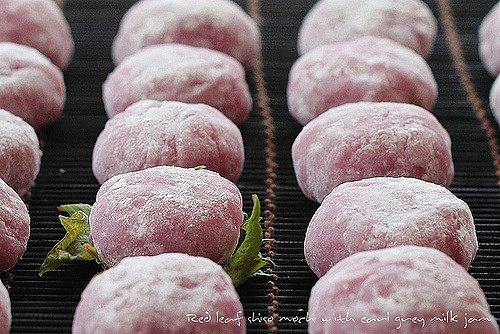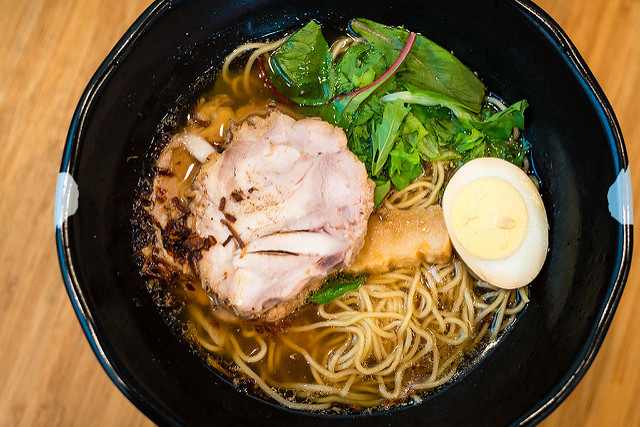Your Guide To Eating in Japan
Japanese food can be intimidating to those uninitiated with all of the things it has to offer. Never fear, for we have a breakdown of standard Japanese fare and what to expect from a Japanese meal. Here’s a guide to the basics of what Japanese cuisine has to offer, so you can start to explore some of the more interesting taste combinations and sensations.
Noodles
Photo via Flickr
You’re spoiled for choice when it comes to noodles in Japan. You’re also spoiled for choice on how to eat them. You can start with ramen: thin egg noodles that you may be familiar with already. Think of Pot Noodle or Mister Noodle instant noodles. When ordering them from a restaurant in Japan, they’ll be significantly fresher and more filling than the instant stuff you’ve tried before. Usually, they’re served in a broth (usually miso-based, though it doesn’t have to be) with additions like pork, tuna, sweet corn or seafood. Each area in Japan has it’s own version. Ramen with poached eggs, ham and fresh greens is always nice and filling.
Udon noodles are made from wheat flour and are also usually served in some kind of broth, as the broth often serves as a way of cooking the noodles. They’re thick and they can be a bit slippery, a real chore for chop sticks. They’re hearty, and any chance to try them with tempura (a kind of fluffy, deep-fry style) veggies is not to be missed.
Soba noodles are a bit different from udon noodles, as they’re made from buckwheat making them a darker colour (and they’re usually thinner as well) than udon noodles. You’ll often find soba noodles served cold with different sauces to dip them in, but they can also be served hot, just like udon.
Soups
Soup is an important part to Japanese dining. Usually, you’ll have soup on the table/your own bowl of soup for your meal. You’ve probably heard of miso soup. Perhaps you’ve tried a cloudy bowl with some wakame (a type of seaweed), tofu and green onions. It’s much more versatile than that, though. It can be used as a base for ramen, udon and a plethora of meat (often pork) or vegetarian based soups. There’s also dashi, a clear-based broth that makes the umami (or savoury taste) of many Japanese dishes. It’s made from kelp and fish flakes, giving it a distinctly salty taste. Kenchinjiru is a great soup for vegetarians, as it’s usually made vegan, a Buddhist favourite. It’s made up primarily of different vegetables, and heavily flavoured with shiitake mushrooms among other tastes.

Photo via Flickr
Meat, Seafood and Soy
Sushi and Sashimi are probably the first things that come to mind when you think of Japanese food, and it often serves as a quick lunch for office workers all over Japan. Really though, if you’re into seafood and fish, you’ll find yourself in heaven in Japan. There’s an amazing range of squid, octopus and various other sea creatures that you can eat barbecued, grilled, baked, with rice, in stew… you name it! Generally some form of protein will be the main element to any meal, whether it’s yakitori skewers while having a few beers, gyudon (a beef bowl), or some delicious grilled clams.
We’d be remiss if we didn’t speak about soy and it’s many uses in Japanese cuisine. Tofu and shoyu (soy sauce) can be found in many different dishes. Tofu is often served together with meat (like pork), not as a substitute. Natto is a Japanese dish that takes some getting used to: gelatinous, stinky and stringy, this fermented soybean dish is incredibly healthy.

Photo via Flickr
Desserts
Mochi is a standard type of Japanese sweet that just about everyone can get on board with. It’s made from glutinous rice cake. Think like a very chewy kind of dough made from rice. It’s stuffed with various fillings, depending on season and preference. Red bean is a common option, and mochi with red bean paste is called daifuku. You can find kusa mochi (green-coloured and flavoured with mugwort), ichigo daifuku (whole strawberry mochi), and sakura mochi (flavoured with red bean paste and cherry blossoms).
Doryaki, or red bean stuffed pancakes are also a popular choice. You don’t have to have red bean inside, but instead you can also have chestnut or whipped cream fillings.
Jellies and dumplings like manju (usually roasted, but they can be baked or fried and filled with a sweetened custard or another type of filling) rule supreme in Japanese cuisine. There are so many that the list is endless!
This basic guide to Japanese cuisine should get you started on your culinary discovery. You’ll notice that there are a lot of interesting combinations and ingredients you’ve never heard of before; all the more reason to dig in and try something different!



